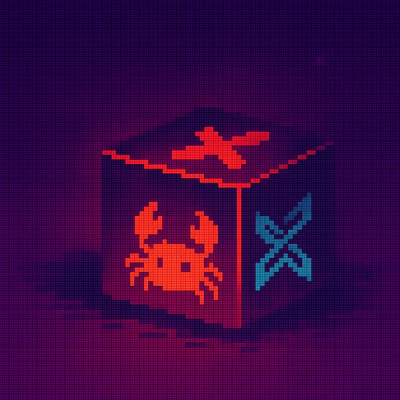
Security News
Rust RFC Proposes a Security Tab on crates.io for RustSec Advisories
Rust’s crates.io team is advancing an RFC to add a Security tab that surfaces RustSec vulnerability and unsoundness advisories directly on crate pages.
@coveord/plasma-tokens
Advanced tools
Design tokens of the Plasma Design System extracted from Figma.
Simply put, a design token is a stored design decision. It can be understood as a variable that holds the result of a choice (in this case made in Figma). Decisions can be made about multiple different subjects, for example colors, typography, spacing, etc. Therefore, it is important to consider that design tokens come in as many types as there are design subjects.
Distribute design tokens to all Coveo products that rely on the Plasma Design System through code.
npm install @coveord/plasma-tokens
For TypeScript users: the package provides its own type declarations.
Tokens are provided through multiple outputs. Choose the format that best suits your needs.
import * as PlasmaTokens from '@coveord/plasma-tokens';
PlasmaTokens.color.primary.actionBlue[6]; // '#1372ec'
@import '~@coveord/plasma-tokens/scss';
// or individual libraries
@import '~@coveord/plasma-tokens/scss/Colors';
.something {
background-color: $plasma-color-primary-action-blue-6;
}
First include the css file you want tokens from in your page.
<link href="/node_modules/@coveord/plasma-tokens/css/Colors.css" rel="stylesheet" />
Tokens in CSS are exposed as CSS variables.
.something {
background-color: var(--plasma-color-primary-action-blue-6);
}
All icons are located under the icons folder in .svg format.
If you want to use icons in a React application, refer to @coveord/plasma-react-icons.
tokens:fetchFetches tokens information from our tokens libraries in Figma and outputs the result in JSON format into the data folder.
In order to fetch data from our Figma libraries on your local machine, you will need to create a .env file for yourself that provides the necessary information for the script to run. The file .env.example will help you know where to get the proper values such as the access token.
--libraries, -lOptional option. Use to target one or more specific tokens libraries. If not specified, all libraries will be fetched. See the list of available libraries.
example:
tokens:fetch --libraries Lib1 Lib2
tokens:buildTranslates the fetched tokens into all the available output formats.
tokens:lintRuns Prettier on the source files generated by the tokens:build command.
This command is automatically run along with the
tokens:buildcommand.
buildBuilds from the sources files that were generated by the tokens:build command the code to be distributed on NPM (creates the dist folder).
| Library Name | Available Formats | Description |
|---|---|---|
Icons | svg, typescript | xml markup of the svg elements of all the icons and their variants. |
Colors | typescript, scss, css | Values of the different palettes used throughout plasma, also contains gradients. |
FAQs
Design tokens of the Plasma Design System
We found that @coveord/plasma-tokens demonstrated a healthy version release cadence and project activity because the last version was released less than a year ago. It has 2 open source maintainers collaborating on the project.
Did you know?

Socket for GitHub automatically highlights issues in each pull request and monitors the health of all your open source dependencies. Discover the contents of your packages and block harmful activity before you install or update your dependencies.

Security News
Rust’s crates.io team is advancing an RFC to add a Security tab that surfaces RustSec vulnerability and unsoundness advisories directly on crate pages.

Security News
/Research
Socket found a Rust typosquat (finch-rust) that loads sha-rust to steal credentials, using impersonation and an unpinned dependency to auto-deliver updates.

Research
/Security Fundamentals
A pair of typosquatted Go packages posing as Google’s UUID library quietly turn helper functions into encrypted exfiltration channels to a paste site, putting developer and CI data at risk.